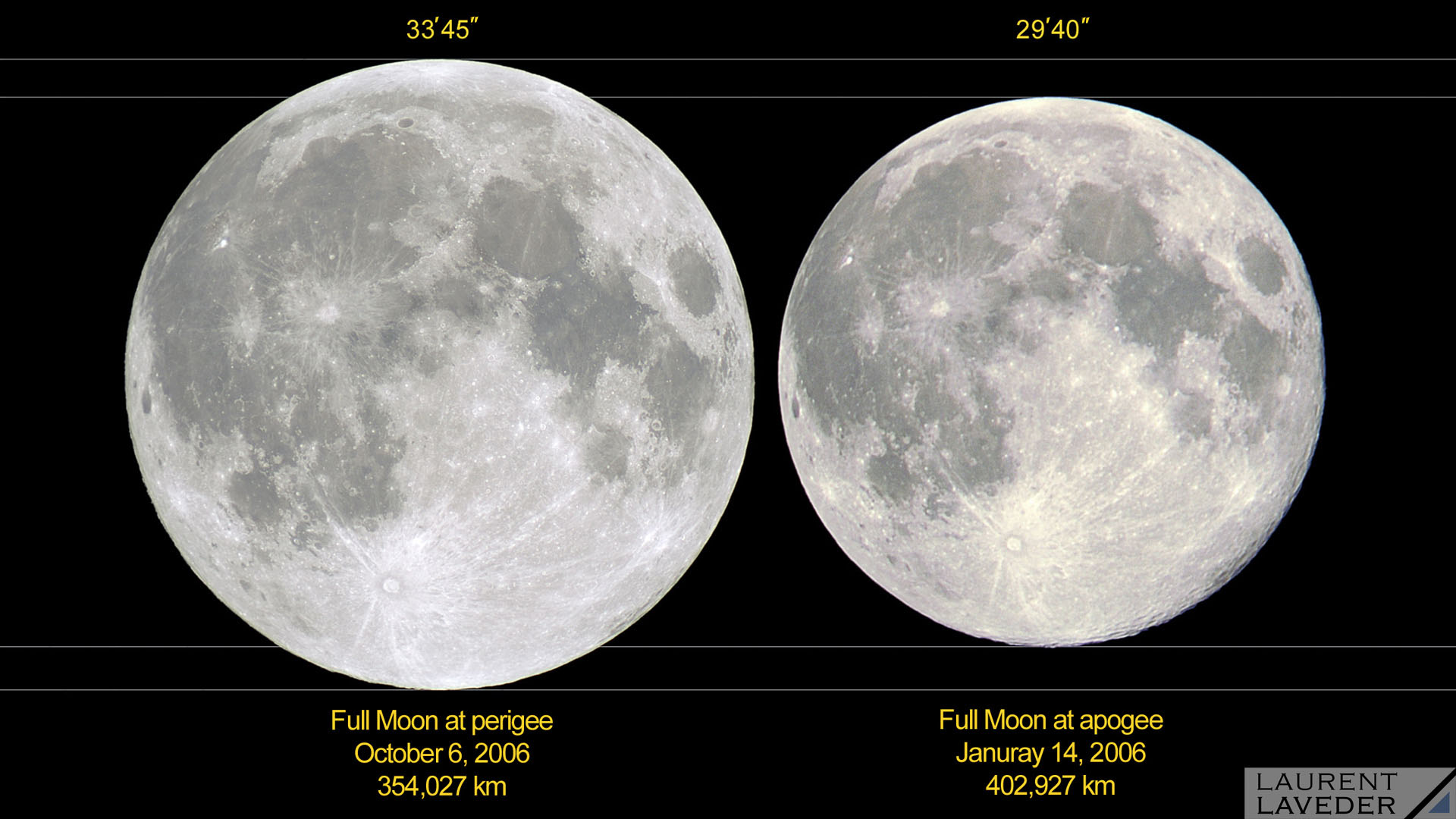I hate the term ‘supermoon’. In fact that is the only time I’m going to use that term during this entire post. The Moon does appear a tiny bit larger in the sky, but it’s not an uncommon thing. Here’s why this one was particularly good at driving headlines.

The technical term for the full Moon we saw this past week is a ‘perigee syzygy,’ which I think sounds way cooler. Perigee is the term for the Moon’s closest point to the Earth in it’s orbit, and syzygy is the term for an alignment of bodies in space, in this case the Sun, Earth, and Moon, giving us a full Moon.
As you can see in the image above, the Moon is a bit bigger when comparing the Perigee and Apogee full Moons, but the average sized full Moon is somewhere in between. So it’s not really that super at Perigee.
The noticeable difference, if any, is in it’s brightness, which is related to the area of the disk. Larger area = more sunlight reflected to Earth = brighter Moon. And between Perigee and Apogee, this amounts to about 30% more area. So all in all, the Perigee full Moon is 30% brighter than the Apogee full Moon. This is more noticeable in the country, away from bright city lights, as the effect is diminished by light pollution.
The Moon Illusion
You may notice the Moon extra big and bright when it’s near the horizon. This is an effect called the Moon illusion. What specifically causes it is not confirmed, but it is likely due to our perception of the size of objects. When the Moon is near the horizon, we can compare it to distant objects like trees, buildings, etc. Because we know that these objects are large and we see the larger Moon near them, we perceive the Moon to be larger in size than it is high up in the sky, where we can make no comparisons.
Pretty Common
The perigee syzygy is quite common. The November full Moon is the second of three in a row. So if you missed this one, December’s full Moon will be big and bright too. The reason the November event made major headlines? The Moon was at it’s closest point to Earth since 1948. Don’t get excited though, this is only a couple thousand kilometers closer than usual, and it creates an imperceptible difference when looking at the Moon.
Even though the full Moon is nice to look at, I prefer the first or third quarter Moon. From an observing standpoint, it’s much more interesting because you can see shadows along the day/night terminator, giving depth to craters and making for very nice photographs.
Either way, if I can convince you to go outside and enjoy the wonders of the universe around us, I’m happy.

I agree that the hype about the “Supermoon” is over the top. The distance between the November perigee moon and the one we just had in October differs by only 0.4%. If that had been the headline, nobody would have bothered to look. But if it gets people to look up, I’m not against a little hyperbole.
As a side note, I see you’ve used “it’s” in the possessive form at least three times your article. This horrifies the English major in me 🙂
Thanks for the comment! And for correcting my atrocities of written English! I’m usually not so bad – I must have written the article quickly…